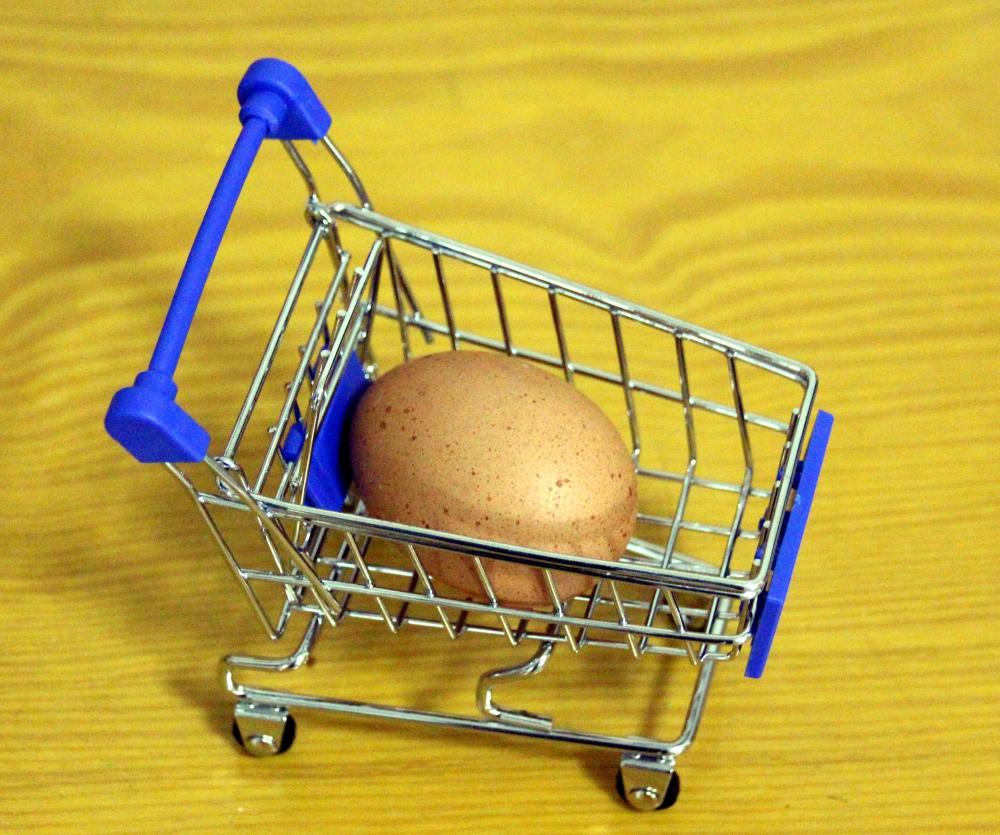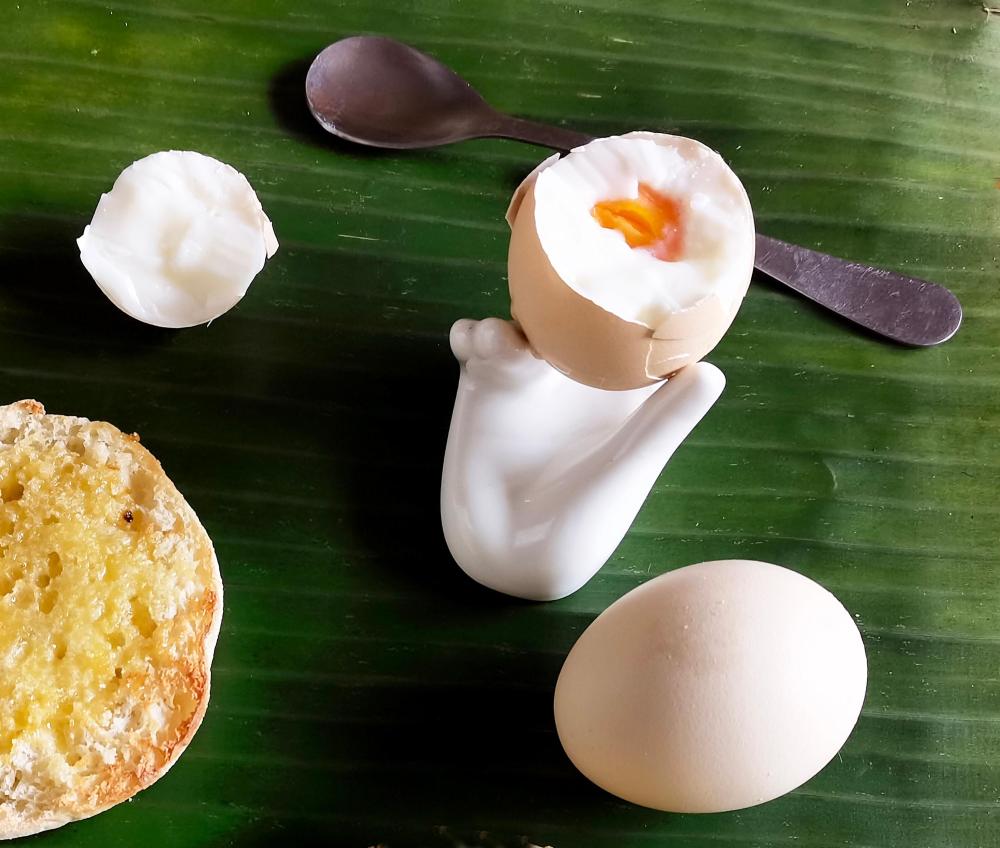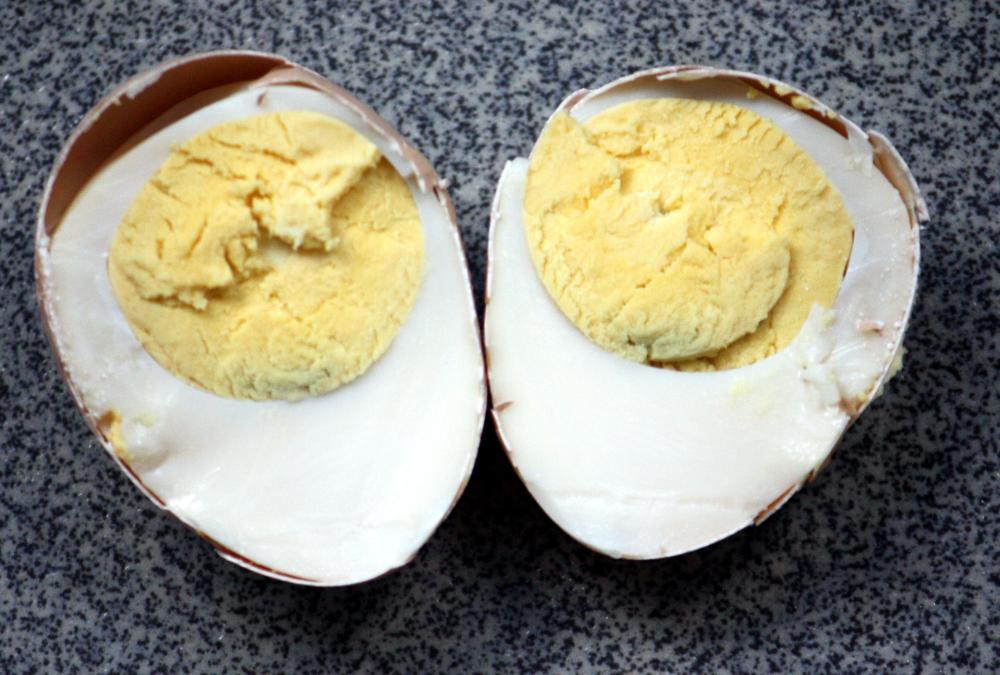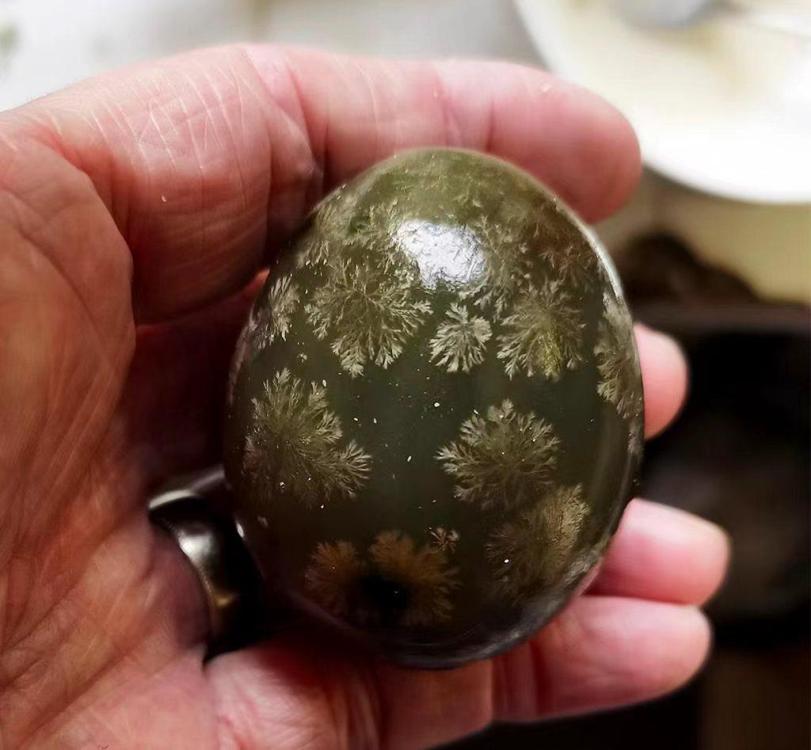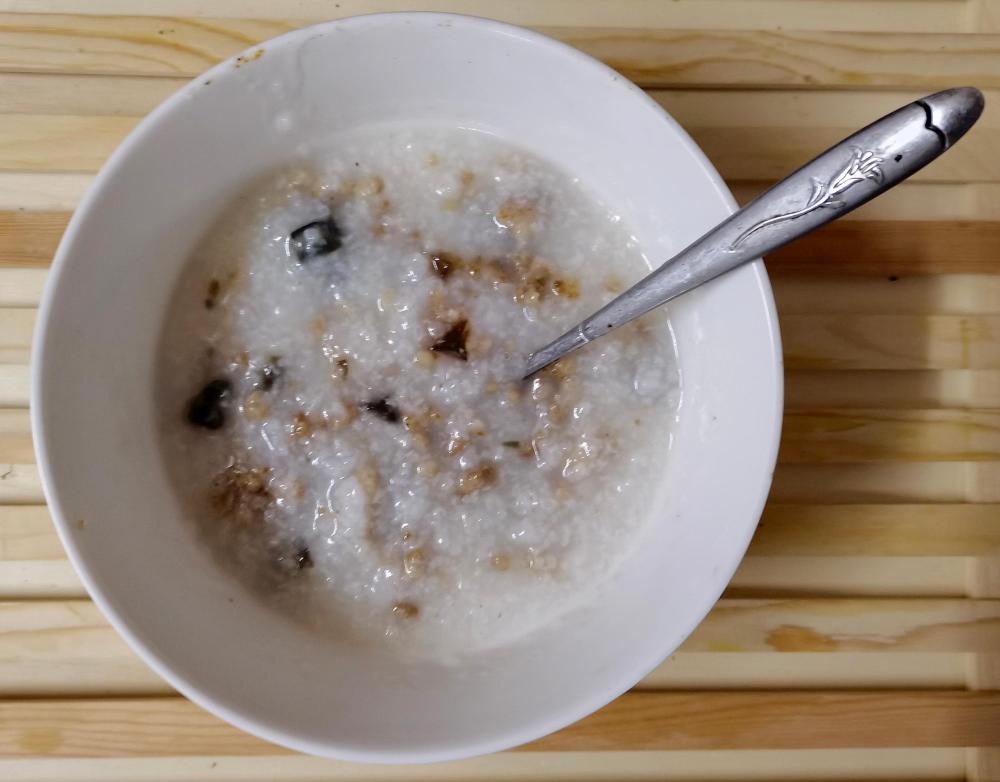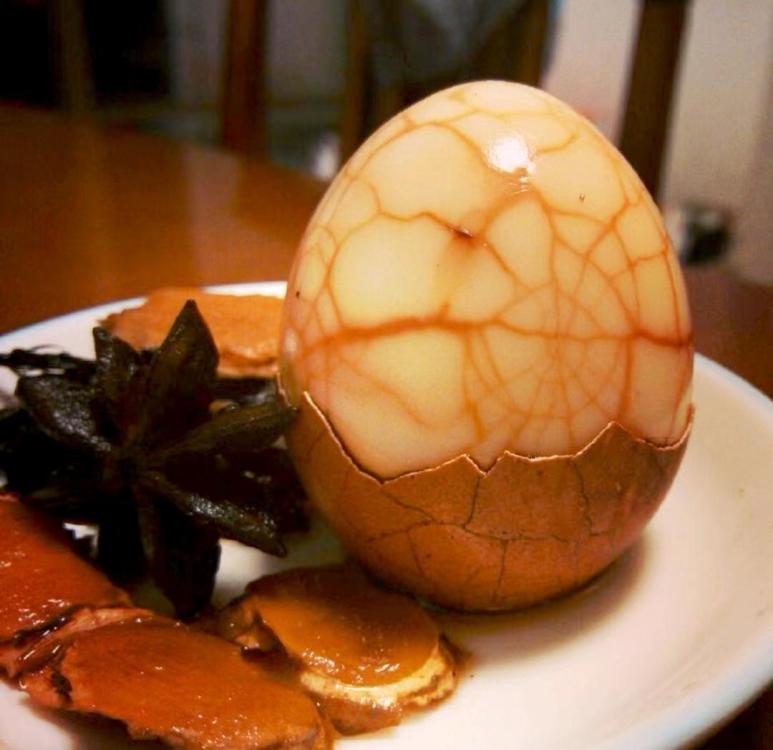By far, the most widely eaten eggs in the world are laid, of course, by female Gallus gallus or Gallus domesticus – chicken hens. S:鸡蛋; T: 雞蛋 (jī dàn), chicken eggs are no less popular in China. Note that in Chinese the bird is always specified, 鸡/雞 (jī) being ‘chicken’.
According to Statista, in 2022, China had over 5 billion chickens, more than any other country by a wide margin. Indonesia was second with 3.5 billion and the USA was 5th with a paltry* 1.5 billion. Of course, not all of these were layers, but most were.
I should note at this point that eggs are never refrigerated here in China. In fact, they aren’t in most places. I’ve never put eggs in the refrigerator in my life. The USDA regulations mean that most eggs are washed before sale, removing the natural protective coating eggs have, without which they have to be refrigerated. Also, in most of Europe, chickens are vaccinated against salmonella. This NPR article explains in further detail.
As usual, in China the eggs are sold fresh (by weight unlike in some countries where they are sold by number), but again also come in disguise.
They are often boiled and eaten on the hoof or dropped into noodle dishes. They are, of course, used in egg fried rice. They are scrambled with tomato; fried; steamed etc. Omelettes are made, but eggs are very seldom poached.
Boiled eggs
They are often sold salt cured.
Salt cured chicken egg
Also, a good proportion are processed into 皮蛋 (pí dàn), aka century eggs, 100-year-old-eggs, thousand year eggs, millennium eggs, and many other names.
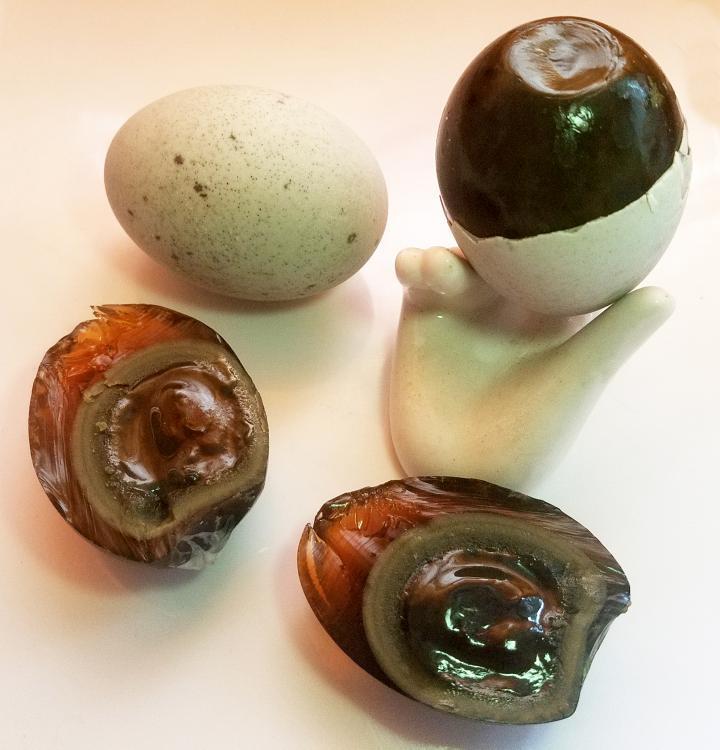
Pidan
This is the unwary shopper’s danger zone. Often century eggs look exactly like fresh eggs. Read the labels! Pidan will be clearly marked 皮蛋 or 松花蛋 (sōng huā dàn), the latter being a prized version in which the egg develops a pattern supposedly resembling a pine flower, which is what the name means – they are nutritionally and taste-wise, identical.
Pine Flower Century Egg
Traditionally made pidan are easily identifiable. they are coated in rice husks, but factory made eggs, the majority today, are indistinguishable.
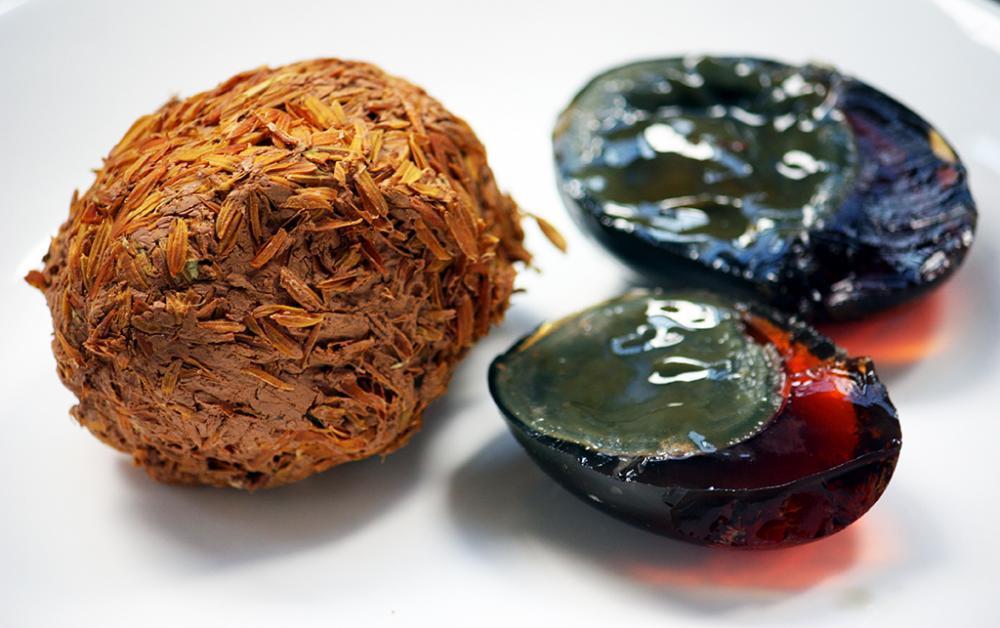
Traditional style pidan
Pidan are often served with chilli as a side dish or chopped in congee.
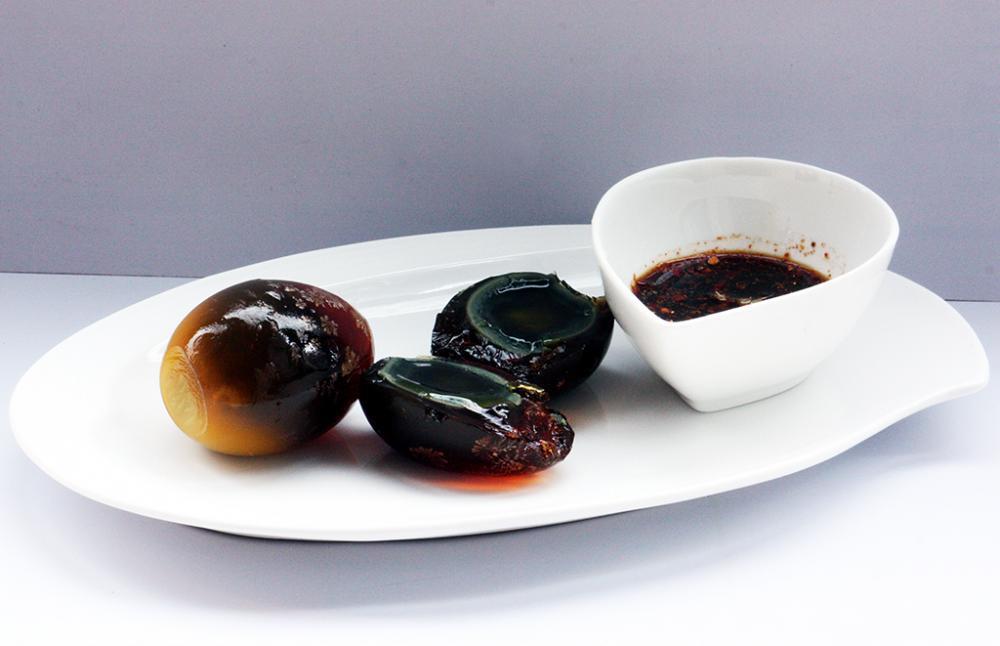
Pidan with chilli dip
My favourite breakfast is 皮蛋瘦肉粥 (pí dàn shòu ròu zhōu), century egg and pork mince congee.
Century egg and pork mince congee
S: 茶叶蛋; T: 茶葉蛋 (chá yè dàn) are sold in mom and pop stores or roadside. These are boiled eggs with cracked but unpeeled shells which are then stewed in black tea with herbs and spices. The tea enters the cracks and ‘paints’ intricate patterns while flavouring the eggs. A common snack.
* Weak pun intended!


